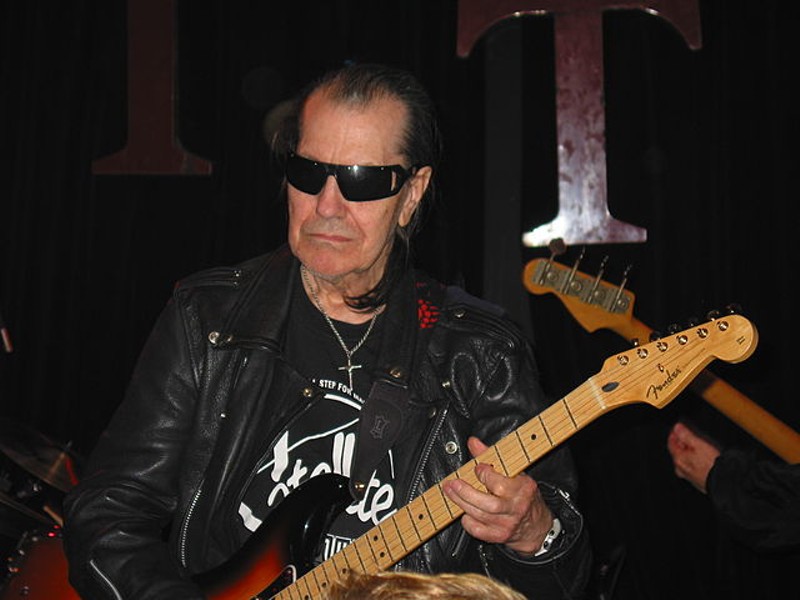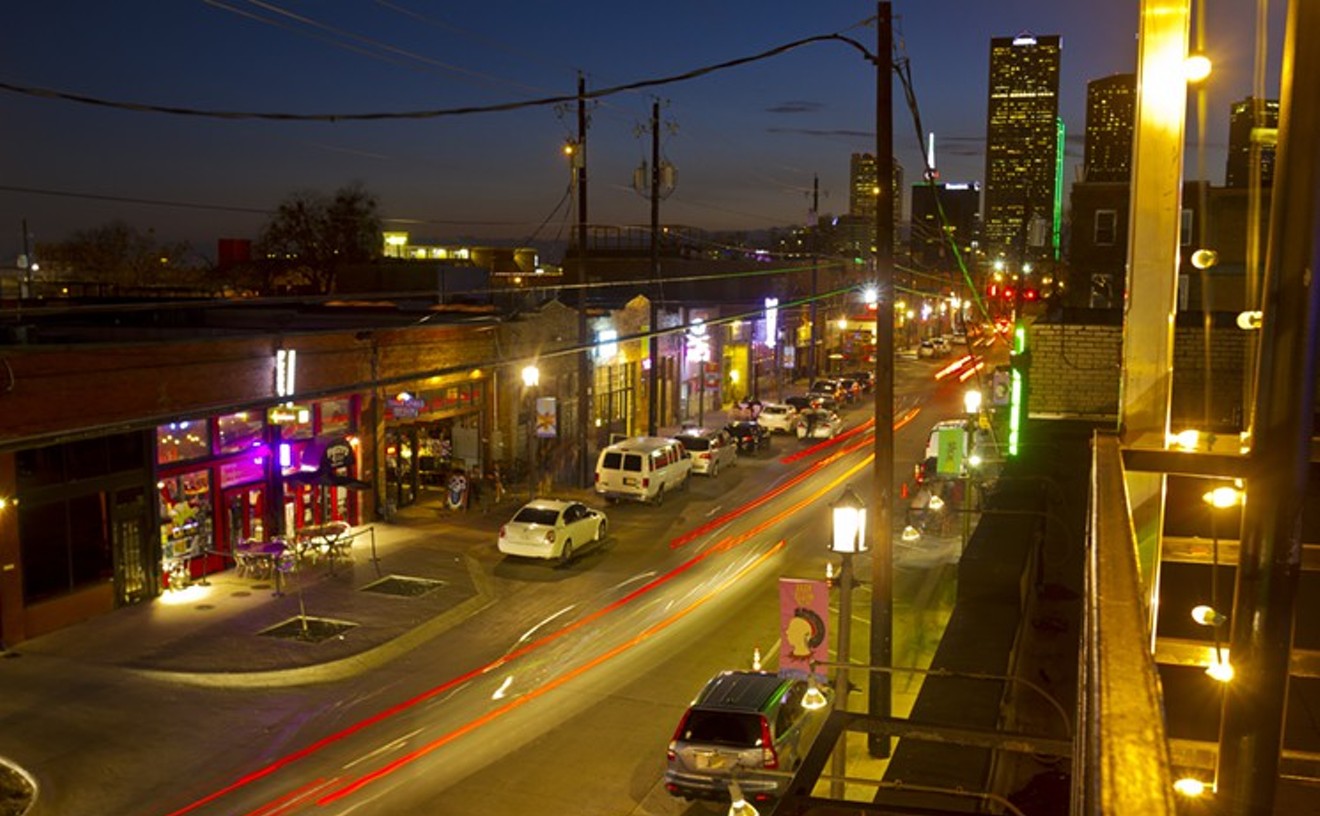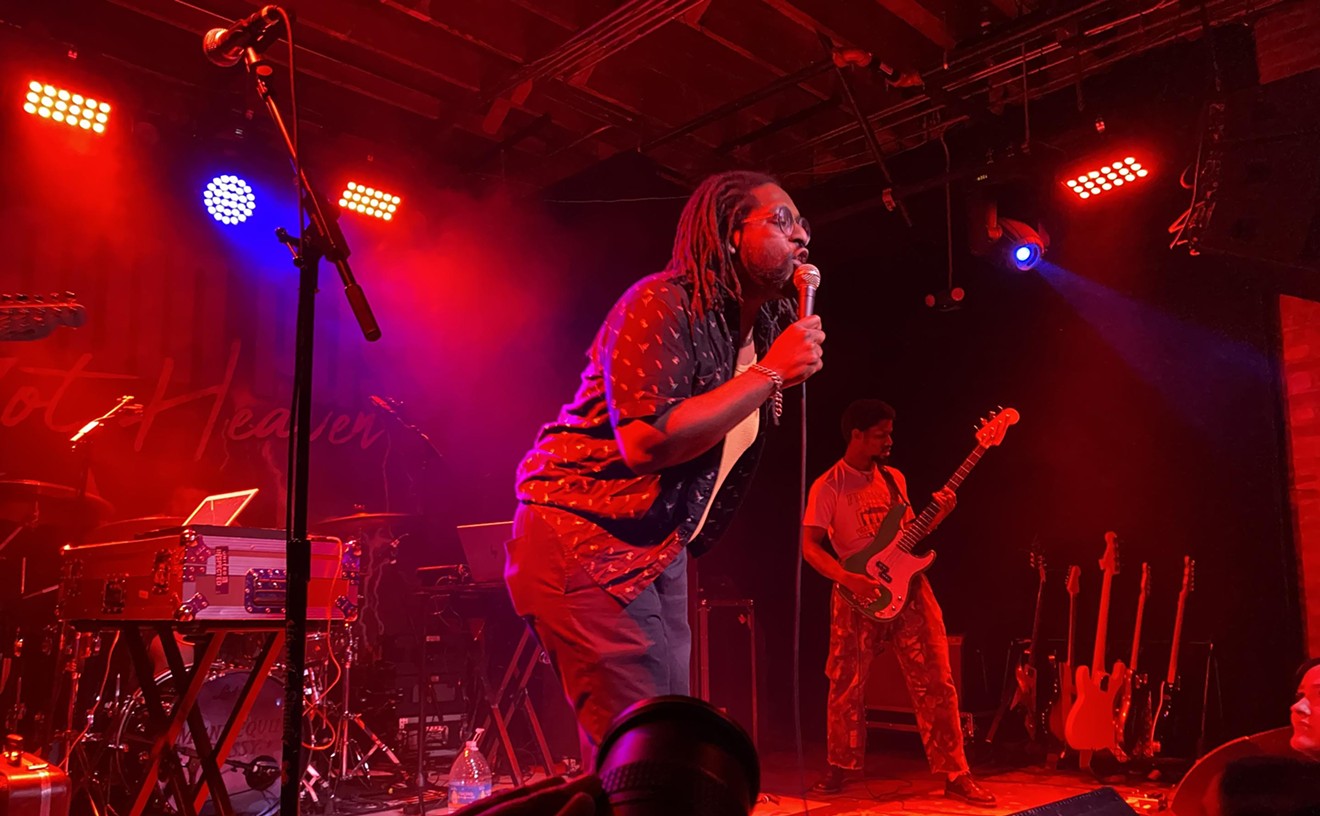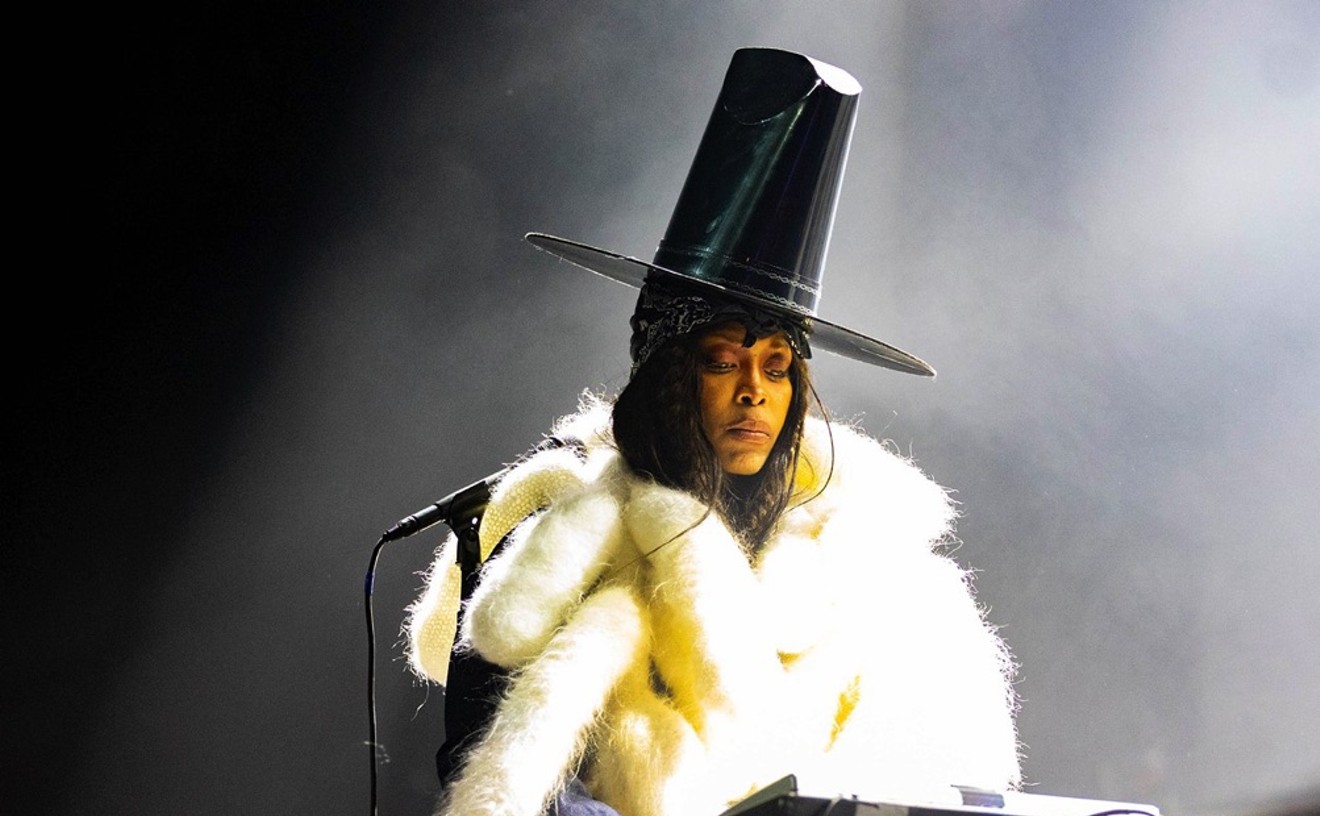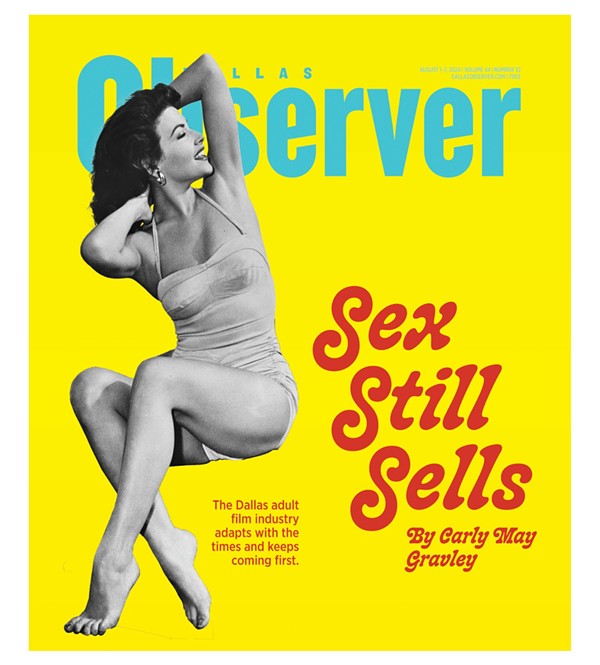This is especially apparent when you consider the effect of the “Kurt Cobain Bump.” When the late Nirvana frontman signaled his affinity for then-obscure artists such as Daniel Johnston, Shonen Knife and the Melvins, major labels went out of their way to wine-and-dine the artists in hopes of inking a deal with them. (If that sounds like hyperbole, just note that Atlantic Records signed Johnston while he was in the care of a mental hospital.)
These three artists would eventually return to independent labels.
But Cobain also spurred renewed public interest in blues legend Lead Belly when he spoke of his influence on Nirvana’s sound and even covered “Where Did You Sleep Last Night” during the legendary MTV Unplugged taping.
Now, as hard as it might be to believe, we don’t have even a fraction of the bully pulpit that Kurt Cobain has, but if we did, we would use it to tell the world of these 12 artists and how the landscape of music as we know it would suck if not for their invaluable contributions to it.
Here are 12 obscure artists who had a big influence on popular music:
Link Wray
Influenced: Bob Dylan, Led Zeppelin, The WhoLink Wray had one hit in 1958, and it was the first instrumental track to be banned from radio stations.
How did this happen? Well, for his signature 1958 hit “Rumble,” Wray used a pencil to poke holes in his amp, which gave the surf rock guitar a fuzzy, distorted sound that was too edgy for puritan audiences.
People have jokingly and sincerely referred to “Rumble” as the first shoegaze song in recorded history, but its influence goes further than that. Jimmy Page himself once said, “The first time I heard ‘Rumble,’ that was something that had so much profound attitude to it. … It really does.”
John Lennon once called Wray one of the “great unknowns of rock n’ roll.” Iggy Pop said he “left school emotionally” when he first heard “Rumble.” Pete Townshend said that he wouldn’t have picked up a guitar were it not for “Rumble.”
Even long after his surf-rock phase, Wray proved profoundly influential, as his self-titled 1971 album (which mostly ventured into roots and Americana territory) boasts songs that were eventually covered by Nick Cave, The Neville Brothers and Father John Misty.
Despite all this, and despite being frequently credited for inventing power chords, Wray played clubs toward the end of his life. In 1997, his comeback tour made a stop at Trees. The following year, he played at Fort Worth's Caravan of Dreams.
Silver Apples
Influenced: Jimi Hendrix, Beastie Boys, Portishead
In the 1960s, electronic music was mostly confined to the works of avant-garde composers like Pierre Schaeffer and Karlheinz Stockhausen.
Electronic music trailblazer Wendy Carlos brought electronic music to the mainstream with her landmark 1968 album Switched-On Bach. That same year, New York experimental outfit Silver Apples integrated electronic music into psychedelic rock in a self-titled album that is often credited with bringing electronic music to the world of rock and pop.
Kraftwerk rightfully receive credit for being pioneers of electronic music, but their trailblazing would not have been as likely were it not for the blueprint provided by Silver Apples’ late mastermind Simeon Coxe, who died in September 2020.
Funky 4 + 1
Influenced: Run-D.M.C., Schoolly D, De La Soul
If you dig into the history of pioneering hip-hop group and Sugarhill Records staple act Funky 4 + 1, one of the first things you will notice is that one of the members of the outfit went by the name “Jazzy Jeff.”
But don’t be fooled — this Jazzy Jeff is no relation to Will Smith’s DJ Jazzy Jeff.
This group started in The Bronx in 1977, one year before fellow locals and labelmates Grandmaster Flash and the Furious Five. In 1980, they released their signature hit, “That’s The Joint,” which was sampled by later rap and hip-hop stalwarts such as EPMD, Beastie Boys and De La Soul.
Funky 4 + 1 is also considered one of the first acts in the genre to have a female emcee in its lineup and is with all certainty the first hip-hop artist to appear on Saturday Night Live. The 1981 episode’s host (Debbie Harry of Blondie) later credited “That’s The Joint” for making her fall in love with the genre.
Blondie guitarist Chris Stein recalled the band picking Funky 4 + 1 as the episode’s musical guest, saying in an interview with Wax Poetic, “The people on the show were so nervous about them doing it. I remember trying to explain to them how scratching worked, trying to verbalize what that is for someone who has no idea. It’s really difficult.”
Lois Maffeo
Influenced: Bikini Kill, Snail Mail, Sleater-Kinney
Along with Beat Happening, Lois Maffeo is one of the foundational underground artists of the 1980s in Washington State's capital, Olympia.
But in a small city like Olympia, everyone in a burgeoning punk and indie scene is an influence to one another. In the 1980s, Maffeo cut her teeth as a college student recording acoustic songs for K Records releases and sharing bills with fellow labelmates. In the 1990s, she was a more established and prolific figure in a music scene that offered more influential independent labels such as Kill Rock Stars and Yoyo Recordings and boasted acts such as Bikini Kill, Unwound and Heavens to Betsy.
In 1989, right at the cusp between these two decades, Maffeo and Yoyo Recordings founder Pat Maley started a band called “Courtney Love” which, as the Hole cofounder of the same name would be the first to tell you, has nothing to do with her.
The name seemed to be coincidental, as Maffeo herself once said the name came “straight out of nowhere.”
Regardless, Maffeo’s artistry reverberates strongly in the landscape of contemporary indie music whether other artists realize it or not.
DJ Screw
Influenced: Travis Scott, Yung Lean, Thundercat
In Houston, DJ Screw is anything but obscure, and his old house, where he used to sell tapes, is a local landmark. But in seemingly every other part of the world, his work is eclipsed by rappers and producers whose lo-fi, slow-tempo beats have been the rage in hip-hop for the better part of five years.
These traits had been earmarks of the late Houston producer’s signature “chopped and screwed” method of remixing since the early 1990s. Without it, much of Generation Z’s music would not exist, whether it be the music of Lil Uzi Vert, Lil Peep, Clams Casino, 100 gecs or George Clanton.
History has lately given Screw his just recognition, but it wasn’t until after YouTuber Slater was credited with pioneering the “slowed + reverb” style of production in 2017 that publications such as Pitchfork and Houston Chronicle pointed out that the sound was rooted in “chopped and screwed.”
As Chron’s Shelby Stewart wrote, “[‘Slowed + reverb], discovered by suburban white teens, is a simple DIY remixing style that has thrived on YouTube in recent years … But at the root of this so called ‘slowed + reverb’ is a very familiar sound: chopped and screwed, birthed right here in Houston, Texas.”
Suicide
Influenced: Bruce Springsteen, Nick Cave, Daft Punk
If punk is defined by the spirit of not giving a fuck, then Suicide is one of the most punk rock bands that ever existed.
When they were tapped as an opener for Elvis Costello’s 1978 tour, the crowd reacted to Suicide's abrasive electronic sound with the same hostility that New York crowds had shown earlier in their career. This tour was accented by an infamous stop in Brussels, where the crowd hated the band so much that it provoked a riot.
While the band clearly did not enjoy this treatment (who would?), they rolled with the punches like professionals by playing longer, even if it antagonized the crowd. (The entire recording was released in 1998 under the title, “23 Minutes Over Brussels.”)
The point was that Suicide did whatever the fuck they wanted, and no one was going to get in their way, much less antsy Elvis Costello fans. As the frontier of rock and pop music started to expand with use of Moog synthesizers, and as the seeds of punk rock started to be planted by acts such as The Stooges and The Velvet Underground, Suicide put a unique spin on both genres that was profoundly influential to bands like Bauhaus, Joy Division, Radiohead, Depeche Mode, Sonic Youth and R.E.M.
Bruce Springsteen is also a self-professed fan of the band, having covered “Dream Baby Dream” at numerous live shows.
And not that anyone asked, but Suicide was also one of the first punk bands to be described as “punk.” According to the late Suicide vocalist Alan Vega, the band put the words, “Punk Music Mass” on a flier promoting a 1970 show at New York’s OK Harris Gallery.
The Gun Club
Influenced: Jack White, Circle Jerks, Pixies
Jeffrey Lee Pierce of The Gun Club walked so Jack White could run, and no one is a stronger believer of this than White himself.
As he once said to Mojo, "The songwriting of Kid Congo Powers and Jeffrey Lee Pierce has the freshest white take on the blues of its time … 'Sex Beat,' 'She's Like Heroin to Me' and 'For the Love of Ivy' … Why are these songs not taught in schools?"
The Gun Club was an export from the same Los Angeles punk scene that graced us with The Germs, Black Flag, Bags and Redd Kross, but none of their contemporaries had the same affinity for blues, folk, country and glam rock that would be integral to the musical identity of The Gun Club. Pierce, the band’s late guitarist and vocalist, also gave an image to the band that can be compared to Sid Vicious (only, y’know, Pierce was cool and actually played a tangible role in his band’s music.)
The musical output of The Gun Club integrated country music with punk before Social Distortion did and integrated blues into the genre before Pussy Galore and Laughing Hyenas.
Bam Bam
Influenced: Pearl Jam, Soundgarden, Green River
As many critics have pointed out lately, Seattle band Bam Bam predated bands like Nirvana and Mudhoney in the same music scene, only to fade into a criminal state of obscurity.
Bam Bam is considered by these thinkpieces to be one of the first grunge bands for this reason, but “grunge” is a stupid label insofar as its use in the context of the Seattle punk scene essentially denotes “bands who shared a scene with Kurt Cobain.” (Metal Church was in that scene and inspired Dale Crover, who was a fill-in drummer for Nirvana, so they must have been a grunge band!)
Anyhow, Matt Cameron of Pearl Jam was a drummer for Bam Bam before he moved on to more commercially successful pastures, and legend has it that Cobain occasionally roadied for Bam Bam back when the Melvins were playing shows with them.
People have also been quick to point out that Bam Bam’s vocalist, the late Tina Bell, went through the common Black experience of pioneering something in music only for white artists to experiment with it to far more success.
Instead of expounding on that assertion, we’ll instead refer you to a well-written feature on Bam Bam by Bandcamp Daily from November 2021, and you can judge for yourself.
Lee “Scratch” Perry
Influenced: The Clash, Questlove, Jonny Greenwood
Jamaican artist Lee “Scratch” Perry died in August 2021, leaving behind a vast body of work that notably included production for platinum-selling artists like Bob Marley and The Clash. He was also a featured artist on the Beastie Boys’ 1998 track “Dr. Lee, PhD” (not exactly released during the band’s golden age, but it’s still sick.)
Despite a career that spanned over 60 years in which he was responsible for dub reggae as we know it, Perry spent the final years of his life playing clubs, and the fact that he wasn’t playing multiple nights at arenas named after a department store is nothing short of a travesty.
The Crazy World of Arthur Brown
Influenced: KISS, Ozzy Osbourne, Alice Cooper
Imagine being a parent in 1968 and finding out that your kid is listening to a song that kicks off with the lyrics, “I am the god of hellfire, and I bring you … fire!”
That was the experience many parents had that year when Arthur Brown released his single, “Fire,” which peaked at No. 2 on the Billboard Hot 100 behind The Beatles’ “Hey Jude.”
Inspired by artists like Screaming Jay Hawkins, Brown tried his hand at the psychedelic sound that was sweeping rock music and brought a shock value that made him that generation’s Marilyn Manson (before those allegations came out).
Despite dropping an influential single that is responsible for much of the chart-topping rock and metal music from the 1970s, Arthur dropped off the grid and moved with his wife to Austin, where he started a painting company with Jimmy Carl Black from the Mothers of Invention and became a counselor.
R. Stevie Moore
Influenced: Steve Lacy, MGMT, Mac DeMarco
Before doing it yourself was something in which sanctimonious punks took a depressing amount of pride, R. Stevie Moore was doing it from his home in Tennessee. R. Stevie Moore independently recorded and self-released his music as early as the 1960s, and in the process, he took his music to the same territory of weird as Frank Zappa and Brian Wilson.
And it just so happened that the music we would come to know as “chillwave,” “bedroom pop” or “hypnagogic pop” had remarkable similarities to R. Stevie Moore. For artists such as MGMT and Ariel Pink, that was intentional. For the trend-traversing copycats who downloaded Pro Tools after listening to Tame Impala once, the decades of musical history they are tapping into is woefully understated.
Thankfully, Moore (who retired from music in February 2020) is having his long overdue internet rediscovery. After Steve Lacy cited him as an influence in a Nardwuar interview, a viral TikTok post calling Moore “Steve Lacy before Steve Lacy” made the rounds in May 2023.
Watch this interview that North Texas’ own Paul Slavens did with Moore in 2012:
Chrome
Influenced: Nine Inch Nails, Butthole Surfers, Prong
First, you should know that Kendrick Lamar sampled this legendary San Francisco industrial/avant-punk group’s song “Distance” in his breakout single “Swimming Pools (Drank).”
You should also know that while Suicide were doing their thing in New York, and the Screamers were doing a kind of similar thing in Los Angeles, Chrome was also laying a load-bearing foundation for goth, industrial, noise, new wave, punk, post-punk, shoegaze and electronic music at the same time as This Heat and Pere Ubu.
Later on, guitarist and staple member Helios Creed was inspired to pursue this sound when he listened to Black Sabbath during an acid trip. The band’s signature release, 1977’s Alien Soundtracks, has traces (and we do mean traces) of Dead Boys, Can, Jimi Hendrix, La Monte Young, The Stooges, Blue Cheer and Frank Zappa.
As bizarre as that stylistic composite may seem, it set an important precedent for acts like Jane’s Addiction, Spacemen 3, My Bloody Valentine, Queens of the Stone Age, The Flaming Lips and King Gizzard & the Lizard Wizard.

